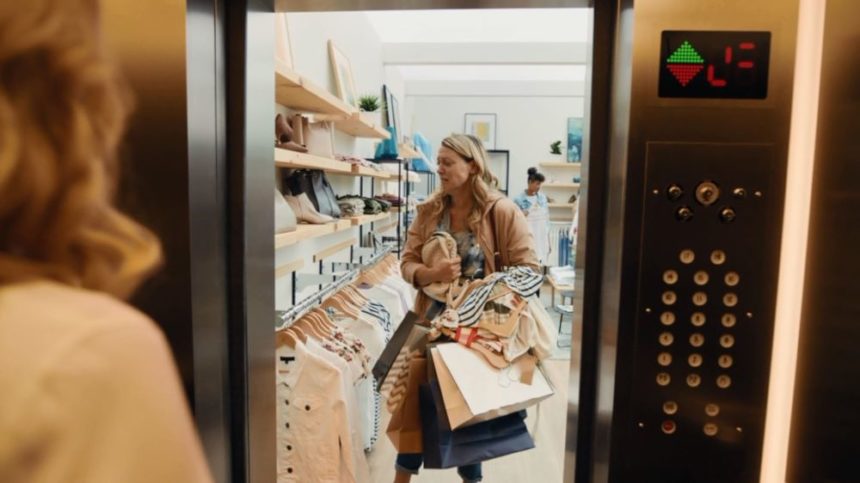An elevator drops, revealing a crying woman in her bedroom, then the doors close and it shoots up, doors opening on the same woman on a frenzied shopping spree.
That’s how bipolar disorder can feel, like an out-of-control elevator, according to Allergan’s marketing campaign for bipolar treatment Vraylar, which uses patients’ descriptions of the disorder.
“When speaking to patients with bipolar disorder, we found in research that patients often use physical metaphors to describe what the feeling of having this condition is like,” said Aimee Lenar, VP of gastrointestinal and central nervous system at Allergan. “They said it feels like I’m on an elevator going up and down, that it feels very unstable in a lot of ways and they don’t know what’s going to come next. We found that resonated with them, so we developed a commercial that would depict the condition how they describe it.”
The campaign, developed with BBDO, is beginning on Monday with a commercial running on TV networks and on digital platforms. Next month, Allergan is planning to release another spot with a different metaphor for bipolar disorder, Lenar said.
Allergan’s older commercials for Vraylar had similar metaphors. The ad for its previous indication for mania associated with bipolar disorder showed patients standing on top of a wobbling house of cards.
Vraylar recently expanded its label to treat depressive, manic and mixed episodes caused by bipolar I disorder, making it the first drug of its type able to treat all of these symptoms with one pill. Other bipolar drugs typically only target depression or mania associated with the condition, meaning patients with multiple symptoms often need to take several pills.
For its new indication, Allergan wanted to show patients that the medicine can ease symptoms for the entire spectrum of bipolar disorder. The elevator metaphor allows the commercial to depict patients in these various states: depressive, manic and mixed episodes.
It also has call-outs to issues people with bipolar disorder face. The spot shows a woman arguing with a friend and a shopping receipt for more than $1,300, depicting the consequences of untreated bipolar disorder that many patients face.
“Some of the stories we heard did describe shopping, where a patient might be doing online shopping or shopping in stores buying 10 different pairs of shoes when they only need one,” Lenar said. “It’s a health condition that can carry stigma and longer-lasting consequences affecting themselves, their families or their financial stability.”
The ultimate goal, Lenar said, is to spur patients to get help for their condition, but Allergan also wants to break down the stigma associated with mental health disorders.
She also noted that previous Vraylar ads have seen “tremendous response” from direct-to-consumer advertising and the treatment is the most responsive of Allergan’s products to DTC ads.
“The ultimate goal of any ad we do is to get patients who may have bipolar disorder medical education, to help them recognize I have been in that condition, I should talk to my healthcare provider,” Lenar said. “Mental health disorders are undergoing transformation right now in the U.S. in the sense that people are taking more openly about conditions they have. [We want to do] anything we can do, like this ad, to help people talk about their condition.”







